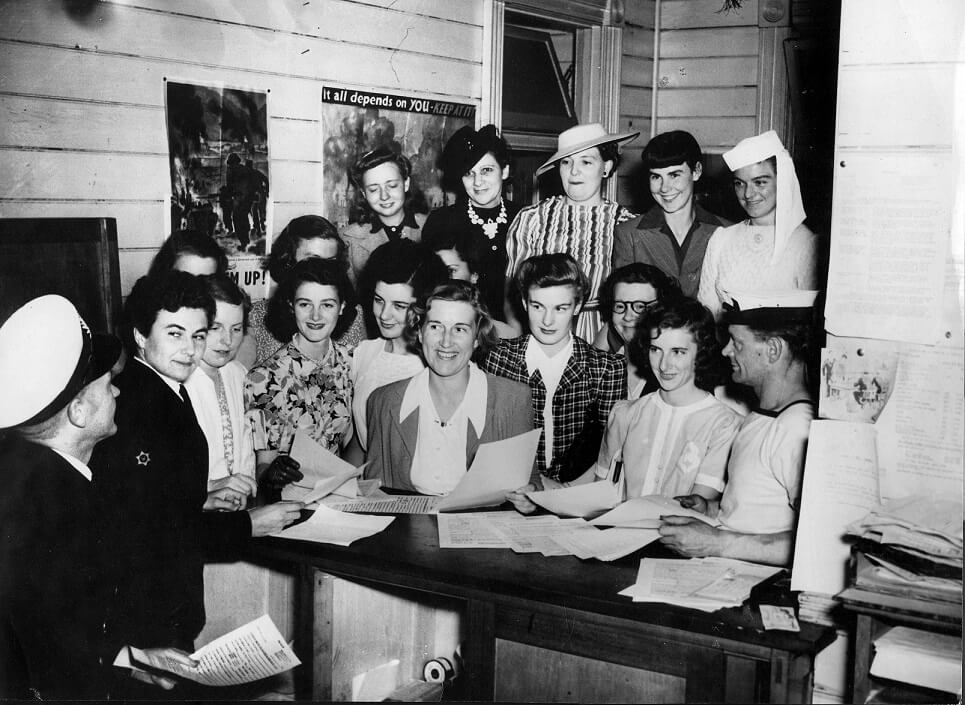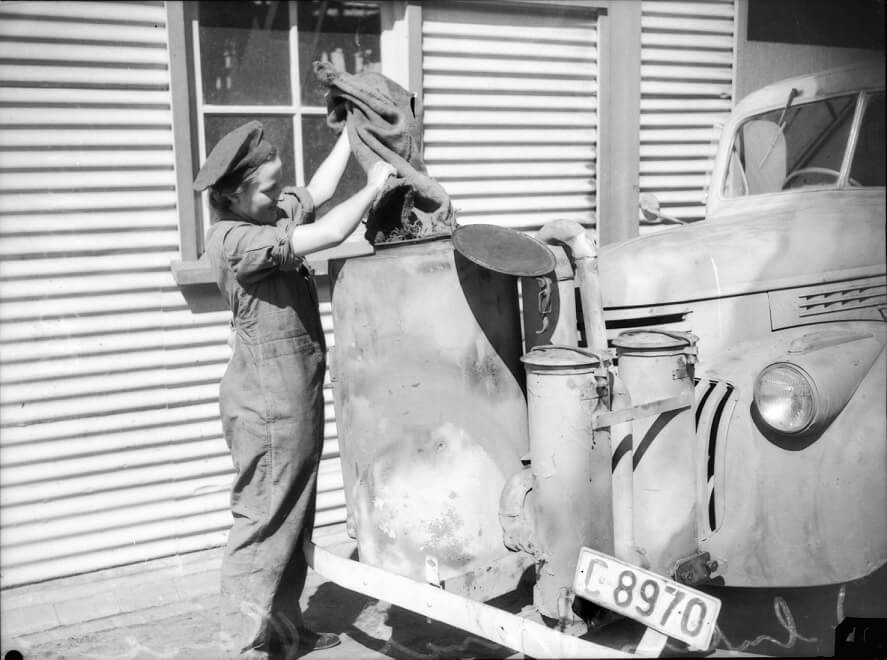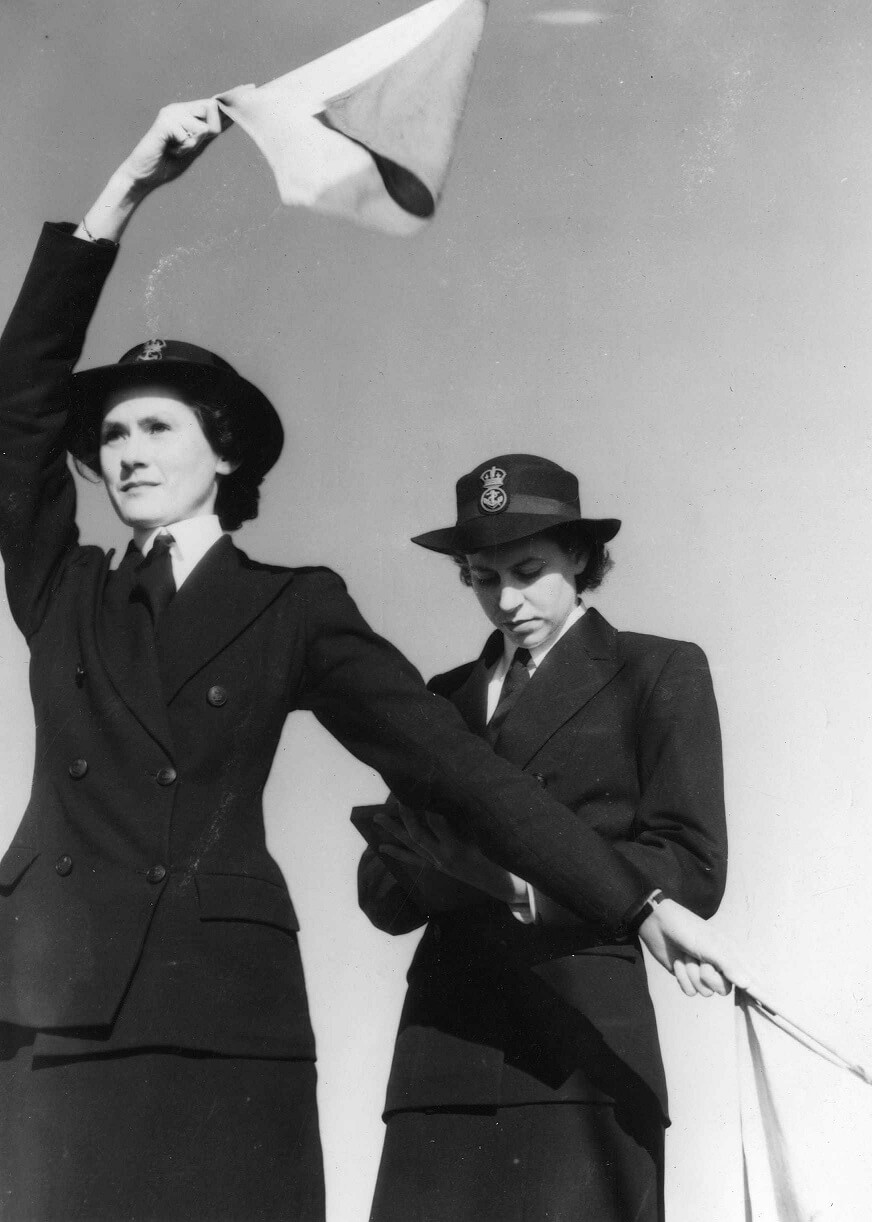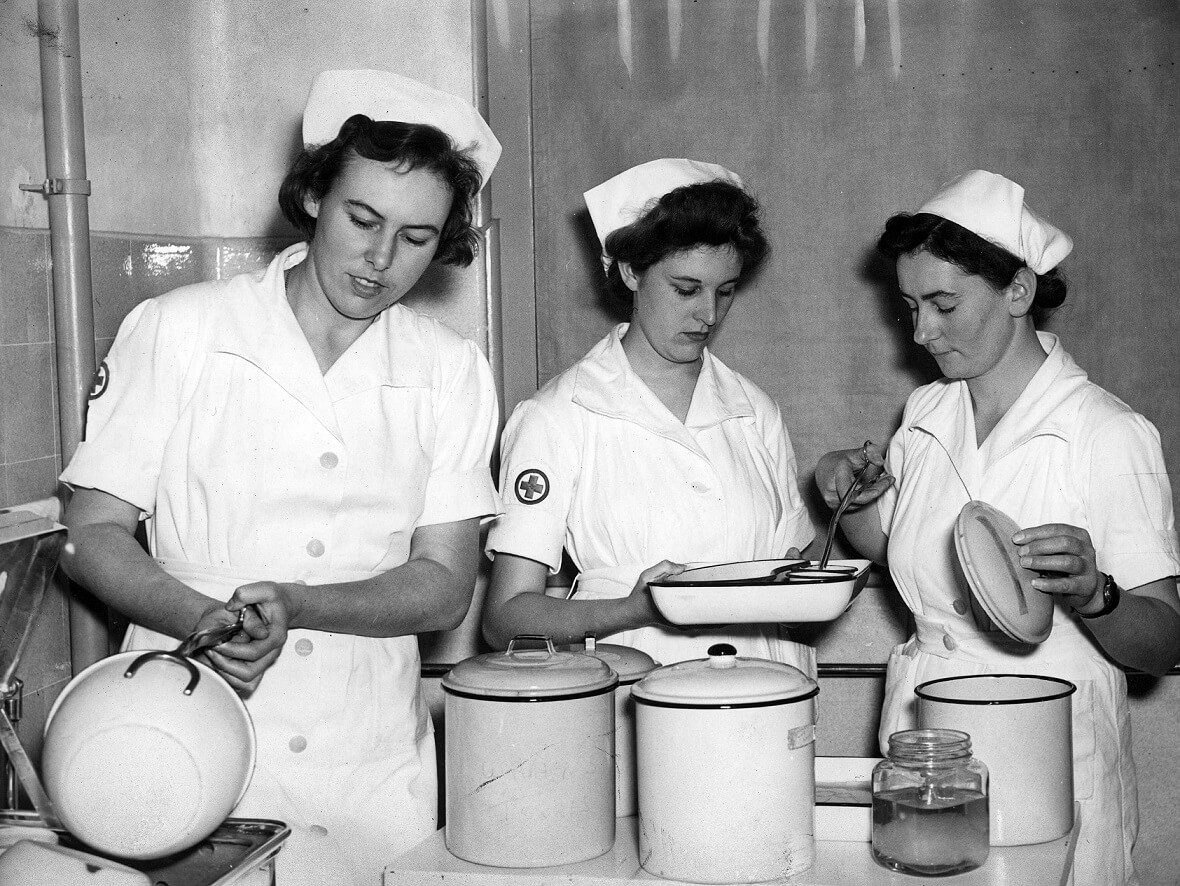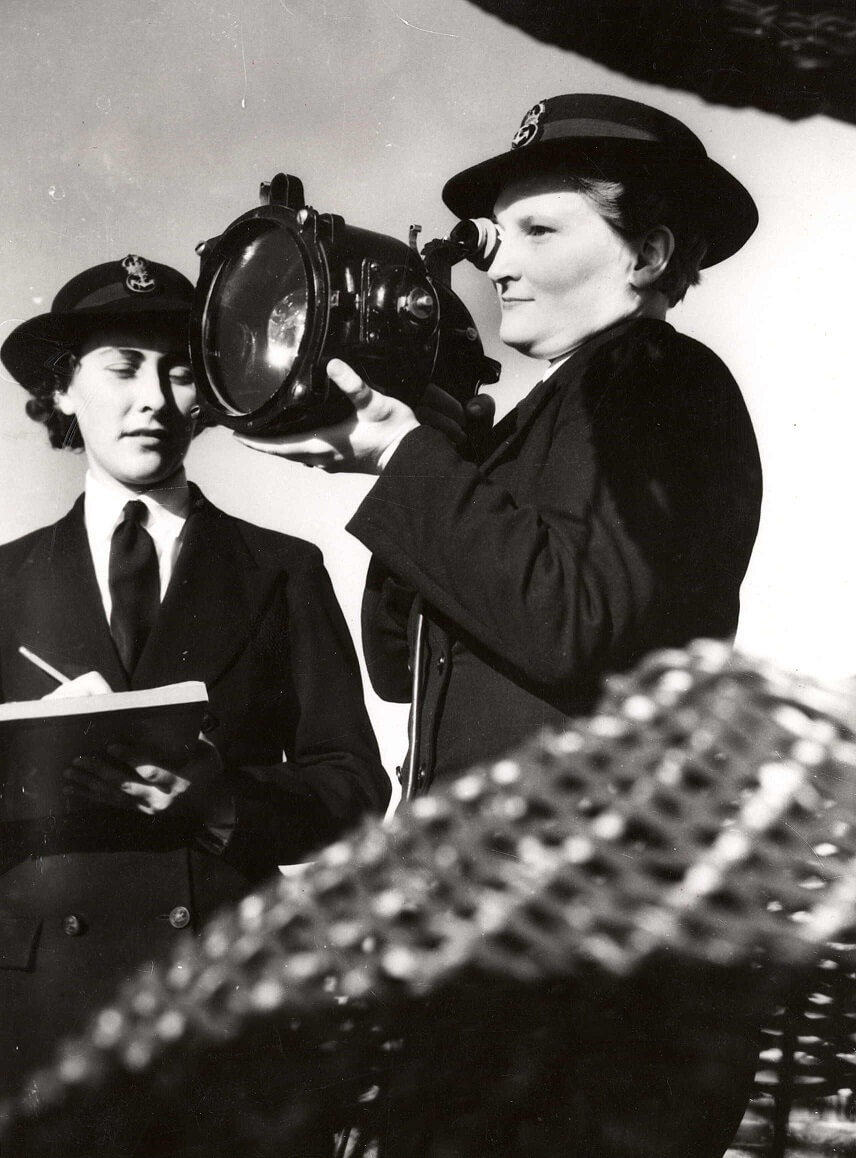The Women's Royal Australian Naval Service (WRANS) was formed in April 1941. By the end of the war more than 3,000 women had served. The first women to be recruited were volunteers from the Women's Emergency Signalling Corps (WESC). Others became coders, wireless transmitter operators, cipher clerks, telephonists, couriers, cooks, stewardesses and drivers. WRANS were not allowed to work outside Australia, or at sea.
WRANS at the recruiting depot in Collins Street, Melbourne, c.1943.
Reproduced courtesy State Library Victoria
Joan Gibson, a WRANS driver, fills the hopper of a charcoal-burning utility truck at the Flinders Naval Base in Victoria, March 1943. Charcoal was used as an alternative power source during wartime petrol shortages.
Reproduced courtesy Australian War Memorial
J.C. Barnes (left) & D.J. Eaton, sending messages across short distances with hand flags.
Reproduced courtesy State Library Victoria
Fay Gaskett (Hobart) and Jean Hayton (Vic.) at the Flinders Naval Depot in Victoria.
Reproduced courtesy State Library Victoria
Many of the WRANS held in their keeping such secret information as the movement of ships, composition of convoys, the facilities of various ports and information on merchant shipping which the enemy doubtless would have liked to know. Their work brought them into close association with master mariners of all the allied nations…
On the lighter side, there was often back-chat per aldis lamp with vessels. Pertinent queries to a ship such as asking her name and details were apt to be answered by “What is your telephone number?”… One signaller at the Sydney range was flashed a signal from an outgoing vessel asking if she would take a personal message for delivery. She replied “yes”, and received the name and address of a woman with the message: “Consider yourself engaged to me. I love you very much. I shall see you in three months time. Bob.”
Margaret Curtis-Otter, W.R.A.N.S., quoted in Patsy Adam-Smith, Australian Women at War.

